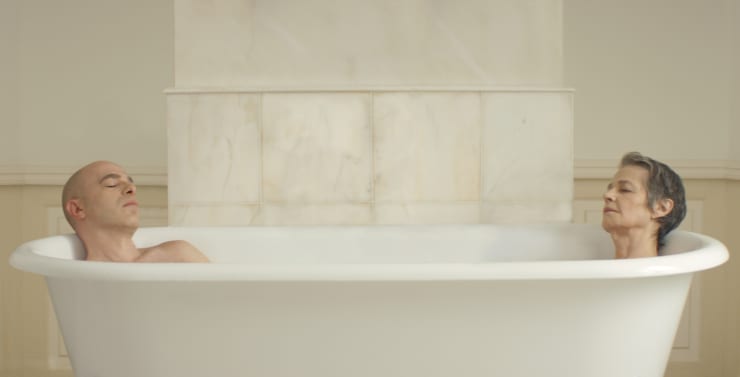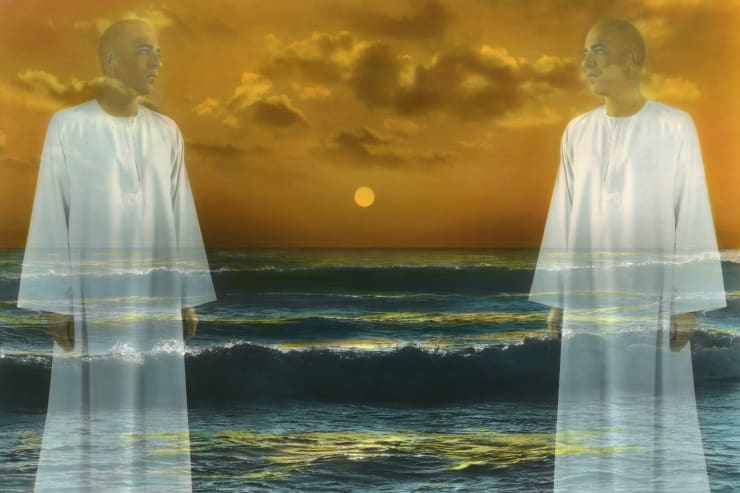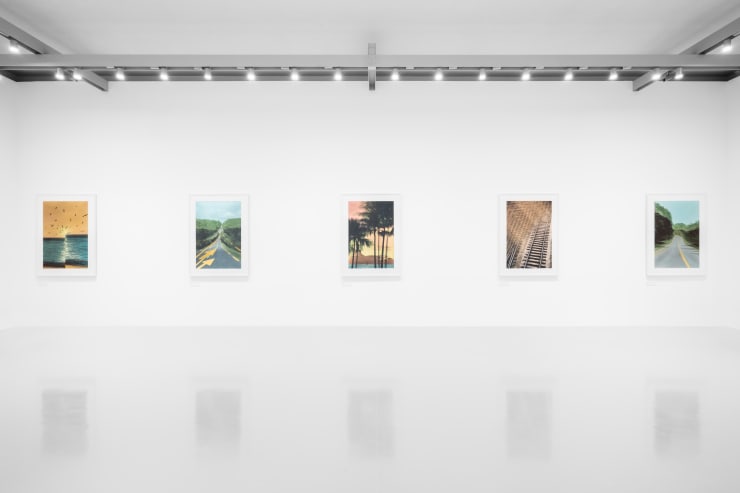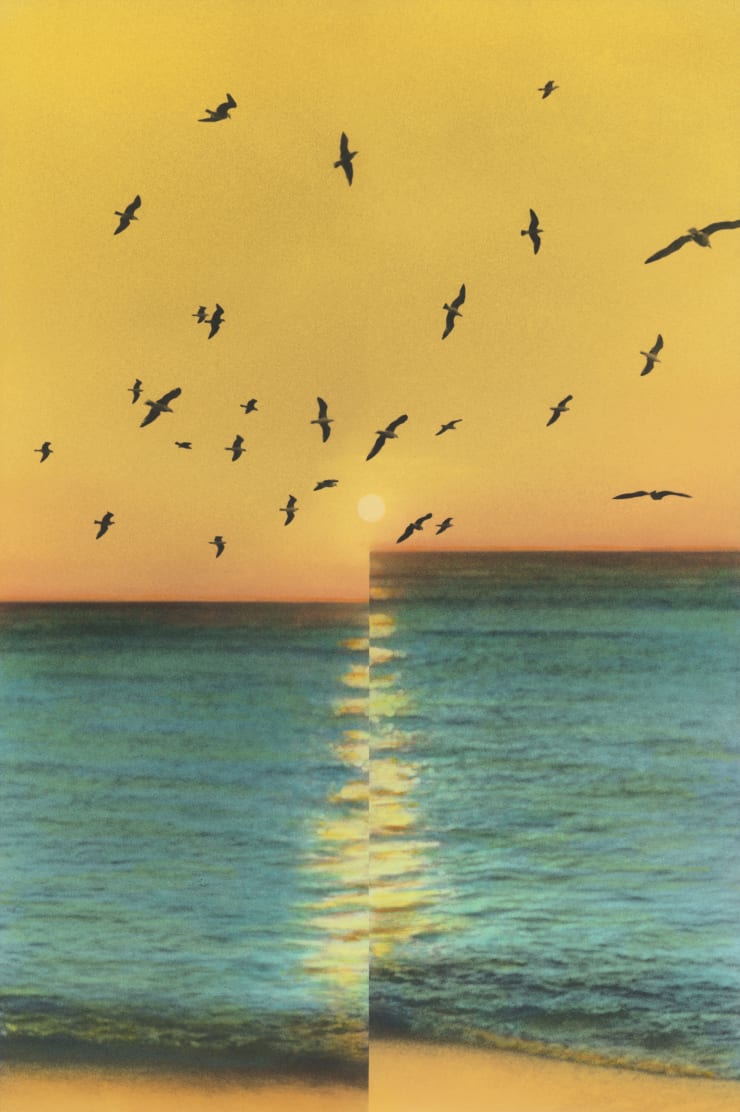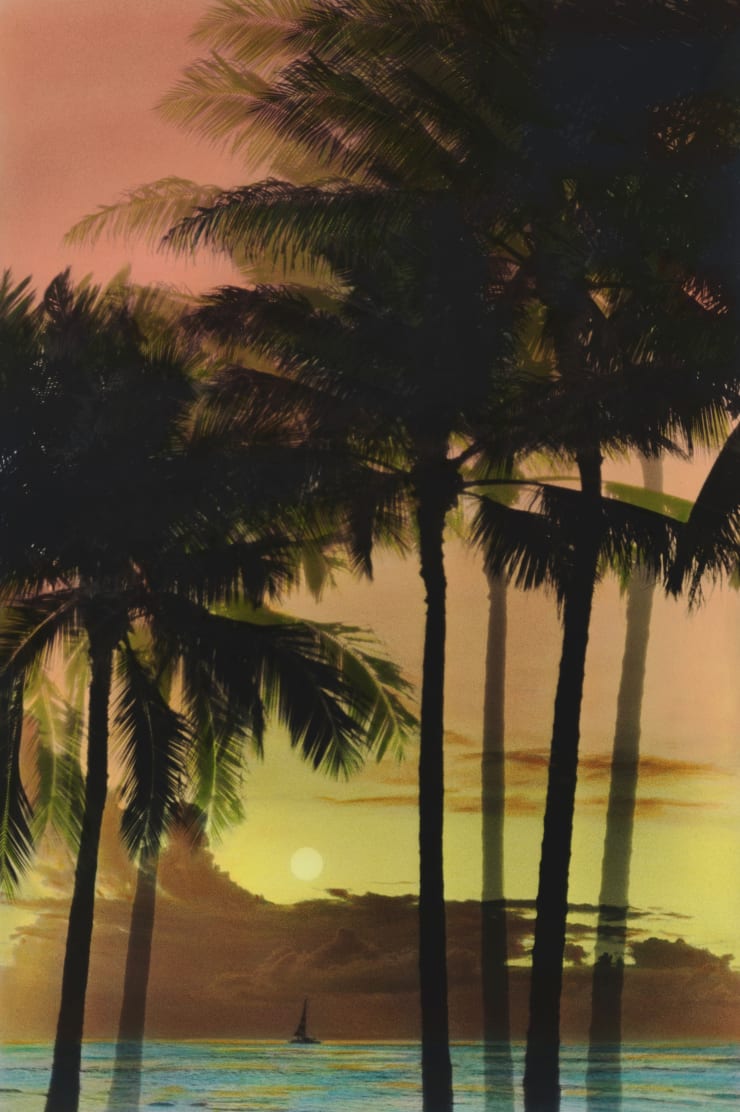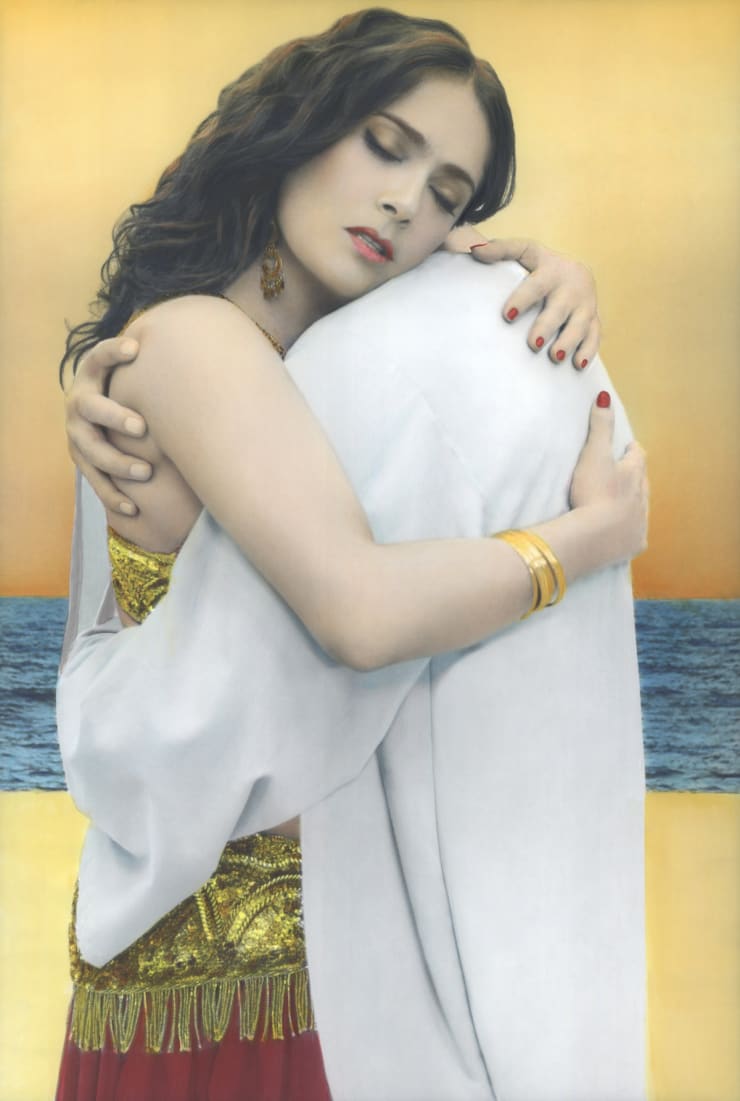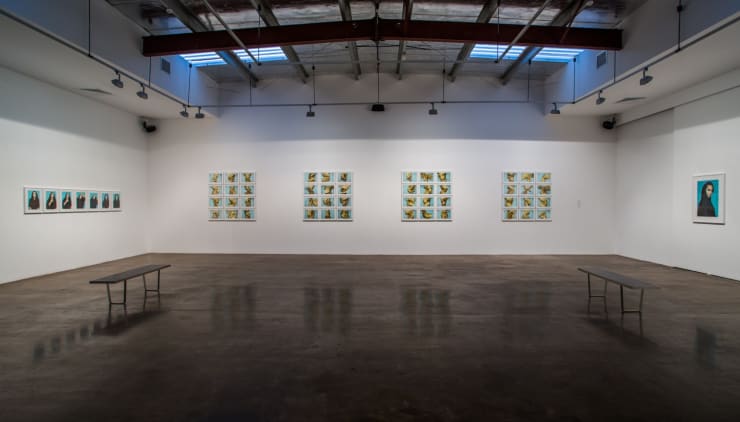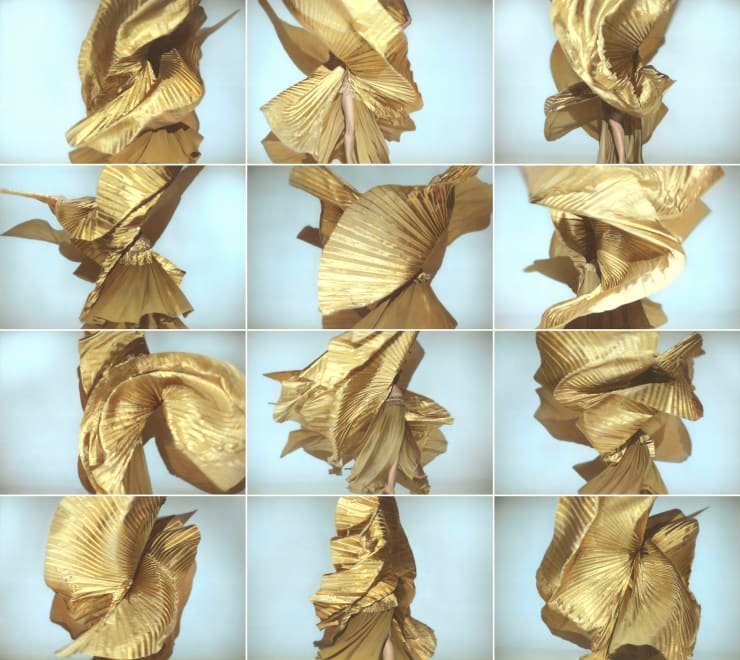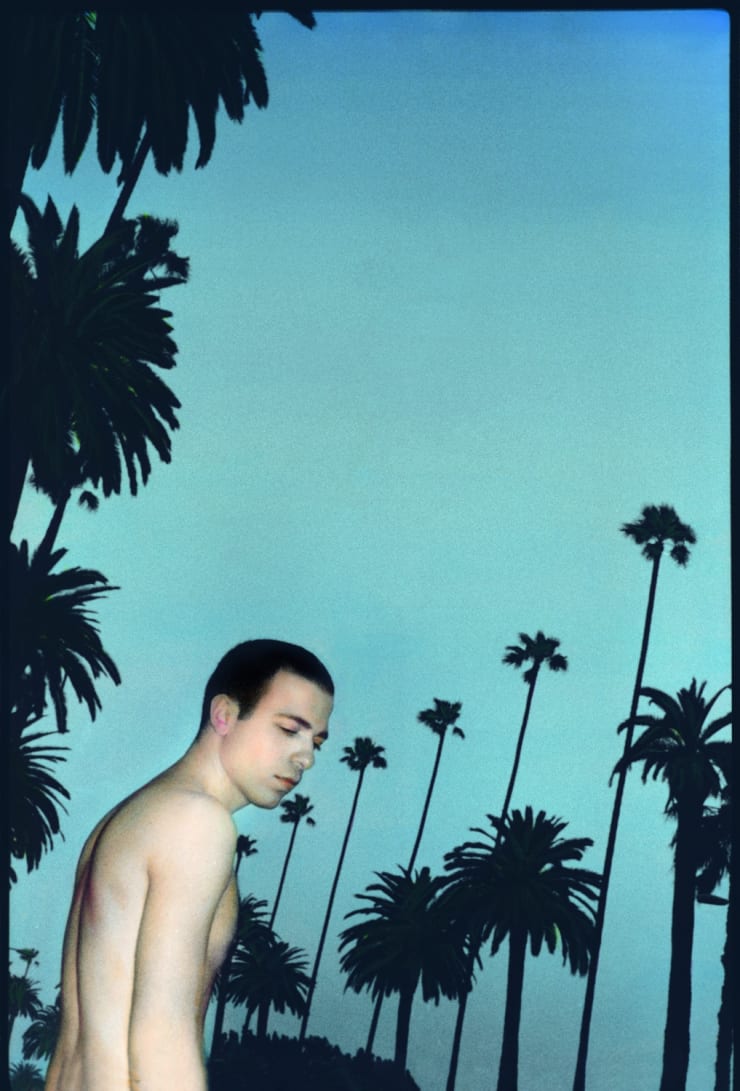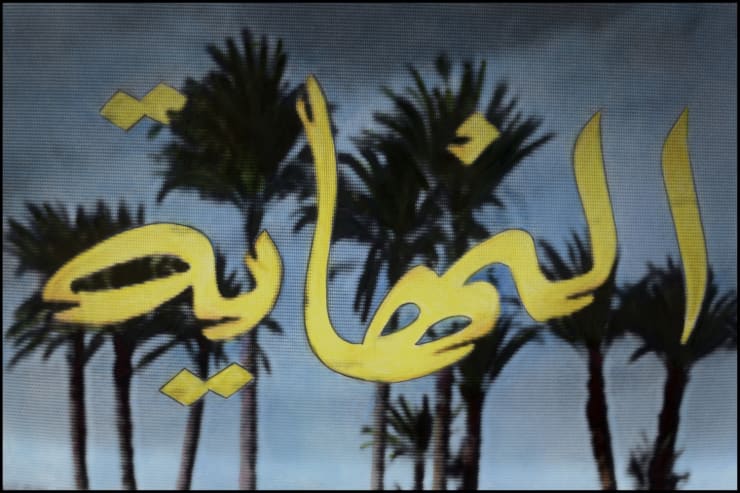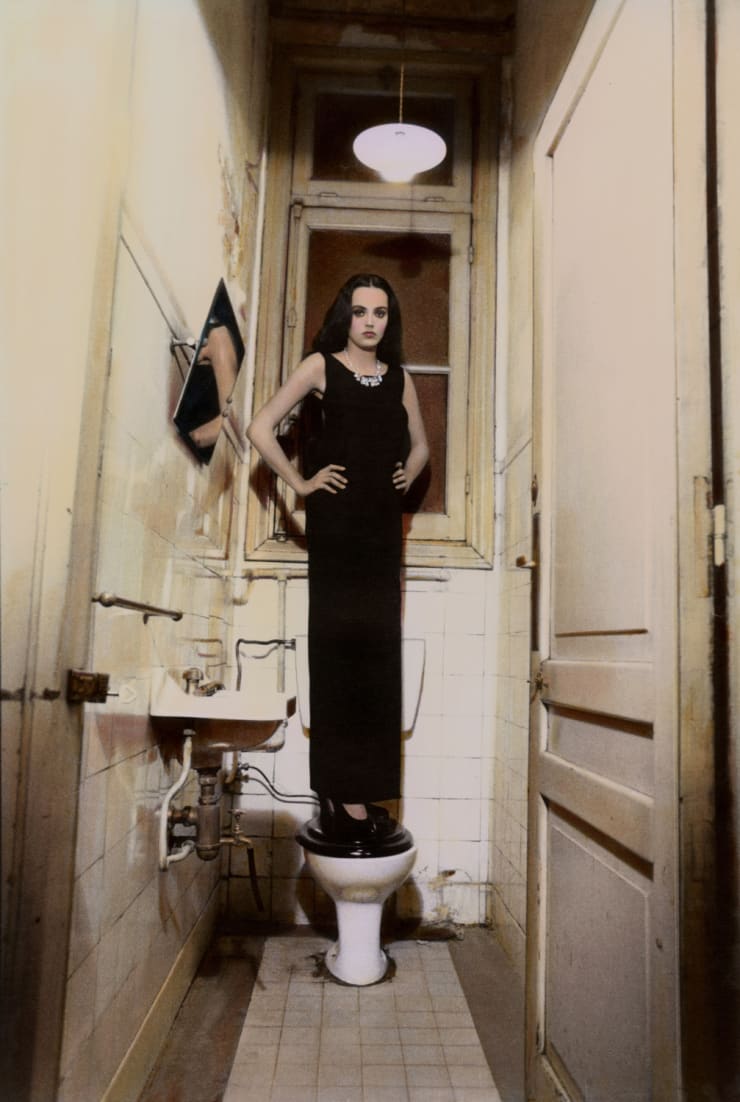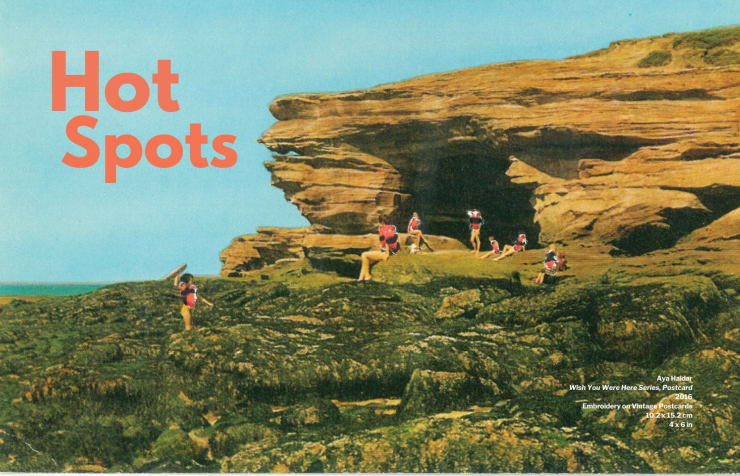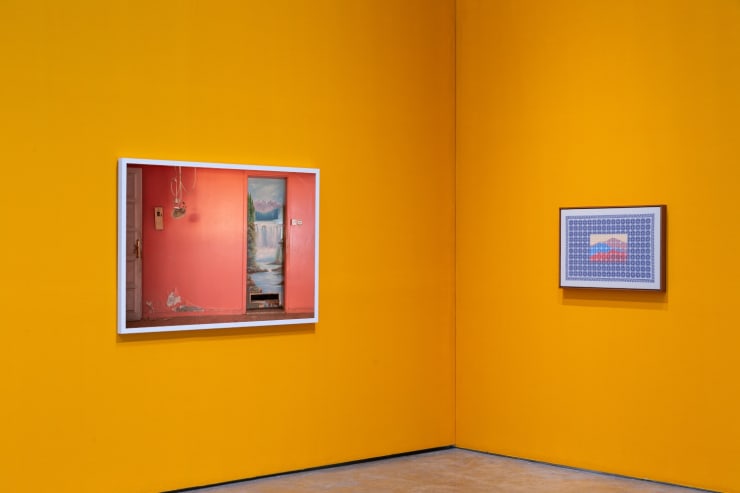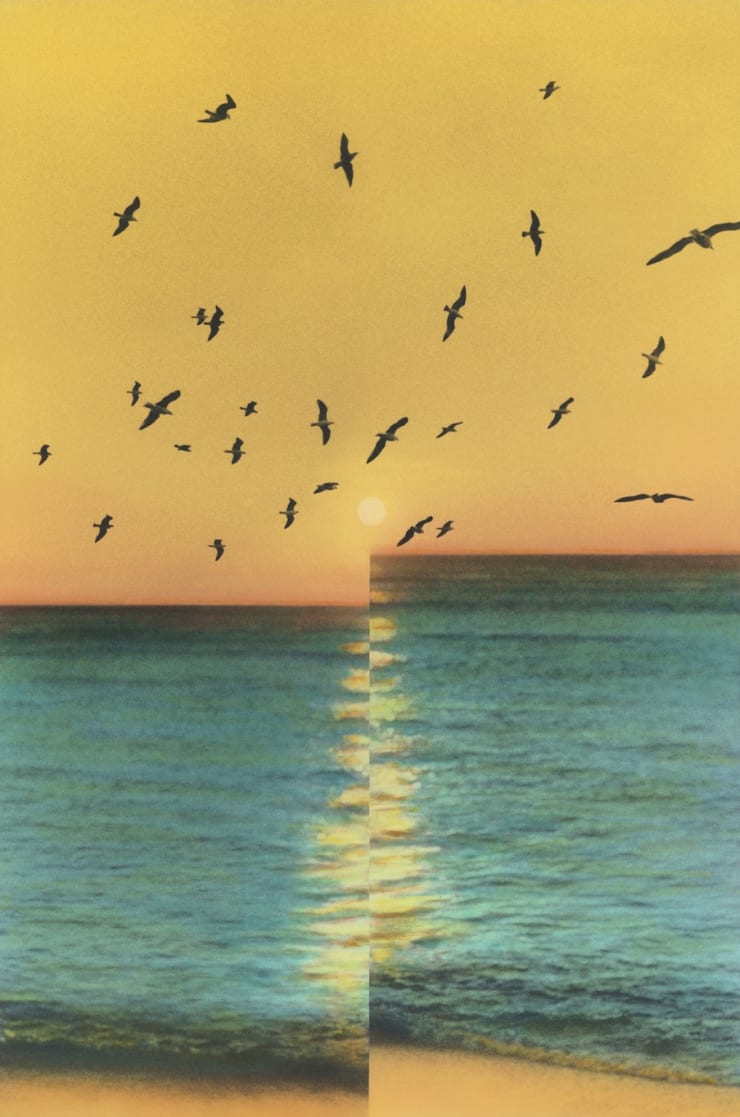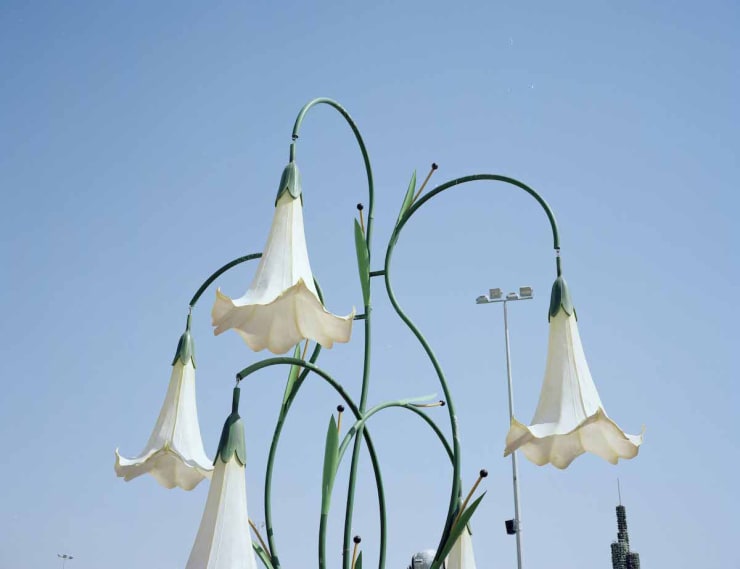Youssef Nabil
Youssef Nabil draws inspiration from the concept of memory and the cinematic universe he grew up admiring in his native country, Egypt. His works’ ethereal aesthetics take from the hand colouring photography technique of the technicolour films. The artist hand-paints each of his black and white photographs, as editions become variations, each a unique version of the artist’s labour.
Nabil began his career in 1992 by staging tableaux in which his subjects acted out melodramas recalling film stills from the golden age of Egyptian cinema. His photographs provide an escape from reality, funneled through his cinematographic sensibility. His early works are populated by his personal icons, from movie stars to artists, who become subject characters of Nabil’s stories.
His photographs are marked by a sense of calm instilling an idea of safety. Within the confines of his frames, there is a sense of security and pleasure. Nabil's photography flirts with notions of the exotic and the erotic. The images slide seamlessly across a variety of different genres, which meld together to create a dreamlike sensual mise en scène. Operating as visual narcotics, the photographs invite the viewer into a place of transgressive otherness, a place that breaks with convention.
Contemplating the transitory nature of our passage on Earth, the artist imbues his work with a motif of transience. The self-portraits therefore represent the duality of life and death, reality and dreams, home and exile, as Nabil considers himself a visitor through these poetic landscapes which become vehicles for life experiences. Taken throughout the globe, the self-portraits become metaphors for the artist’s feeling of exile, a longing for a return to a forgone home, which now only exists in idealised silver print memories. Nabil almost systematically represents himself from his back, inspired by the codes of great romantic paintings. The character he embodies, his face shielded from view, becomes an allegory onto which one can project a melancholic imaginary.
Techniques of transparency and split compositions add to the artist’s repertoire of magic realism, inviting the viewer to take part in his personal mythology. The photographs take on a surreal energy as they become situated in a land of dreams, rather than in a physical location. However intimate, the message in his work remains universal, a touching portrait of a life led away from home.
The past decade also testifies to the artist’s foray into the medium of film; with "You Never Left", 2010, "I Saved My Belly Dancer", 2015, "Arabian Happy Ending", 2016, and "The Beautiful Voyage", 2021. As the artist translates his world into moving images, he further invests in his longstanding relationship with cinema.
Youssef Nabil was born in 1972 in Cairo (Egypt). He lives and works in Paris (France) and in New York (USA).
Youssef Nabil’s International solo and group exhibitions include: in the USA, at the Pérez Art Museum (PAMM) in Miami, the Los Angeles County Museum of Art (LACMA), the Studio Museum in Harlem and Aperture Foundation in New York, the Smithsonian National Museum of African Art and Kennedy Center in Washington, D.C., the Savannah College of Art and Design (SCAD) in Savannah and in Atlanta, and the North Carolina Museum of Art in Raleigh; in Canada, at the Aga Khan Museum of Art in Toronto ; in France, at the Centre Pompidou, Maison Rouge – Fondation Antoine de Galbert, Institut du Monde Arabe and Maison Européenne de la Photographie in Paris, the Frac Normandie in Sotteville- lès-Rouen, the Friche Belle de Mai in Marseille, the Rencontres de la Photographie in Arles, ; in Belgium, at the Fondation Boghossian and Maison Particulière in Brussels ; in the UK, at the British Museum and Victoria & Albert Museum in London, and the BALTIC Centre for Contemporary Art in Newcastle ; in Germany, at the Museum für Modern Kunst (MMK) in Frankfurt, the Kunstmuseum in Bonn, and the Gemäldegalerie Staatliche Museen in Berlin ; in Spain, at the Museum of Contemporary Art (MACBA) in Barcelona, the Centro Andaluz de Arte Contemporáneo in Seville, and the Instituto d’Art Modern in Valencia ( IVAM ) ; in Italy, at the Villa Medici in Rome, the Galleria dell’Accademia in Florence, The Palazzo Grassi in Venice and the 53rd Venice Biennale, Unconditional Love ; in Qatar, at the Mathaf Arab Museum of Modern Art in Doha; in Mexico, at the Centro de la Imagen in Mexico City; and in Mali, at the 5èmes Rencontres de la Photographie africaine in Bamako, during which he was awarded the Seydou Keïta Prize. In 2020/2021, Youssef Nabil had his first retrospective exhibition at the Palazzo Grassi in Venice, titled Once Upon A Dream.
Youssef Nabil's work is part of various international collections, among which: in the USA, the Los Angeles County Museum of Art (LACMA), the Pérez Art Museum in Miami (PAMM), the Studio Museum in Harlem, New York, and the Savannah College of Art and Design Museum of Art (SCAD) in Savannah; in France, the Fondation Louis Vuitton, the Collection François Pinault, and the Maison Européenne de la Photographie in Paris; in Switzerland, the Collection UBS Art in Zürich; in the UK, the British Museum and the Victoria & Albert Museum in London; in Angola, the Sindika Dokolo Foundation in Luanda; in Greece, the Photography Museum in Thessaloniki; in Qatar, the Mathaf Arab Museum of Modern Art in Doha; in the United Arab Emirates, the Guggenheim Museum in Abu Dhabi; in Mexico, the Centro de la Imagen in Mexico City.
Four monographs have been published on Youssef Nabil's work – Sleep in My Arms (Autograph ABP and Michael Stevenson, 2007), I Won't Let You Die (Hatje Cantz, 2008), Youssef Nabil (Flammarion, 2013), and Once Upon A Dream (Marsilio, 2020).
-

Hot Spots
A Collaboration Between Tabari Artspace and The Third Line 9 Jan - 10 Mar 2025Hot Spots is the first collaborative exhibition between Tabari Artspace and The Third Line at Sotheby’s, Dubai. This exhibition is part of Sotheby’s ongoing collaboration with regional galleries and brings...Read more -

Perpetual Inventory, Volume 1: An Exercise in Looking
Curated by Dr. Omar Kholeif 19 Dec 2022 - 29 Jan 2023Perpetual Inventory and Dr. O’s Pop Shop at The Third Line, Dubai this December. The Third Line presents Perpetual Inventory, Volume 1 and Dr. O’s Pop Shop: The Live Edition,...Read more -

Youssef Nabil
The Beautiful Voyage 22 Sep - 28 Oct 2022The Third Line is pleased to announce a solo exhibition by internationally acclaimed artist Youssef Nabil. The Beautiful Voyage presents a curated selection of recent works including photographs of cinematic...Read more -

THERE IS FICTION IN THE SPACE BETWEEN
23 Mar - 30 Jul 2020The Third Line is pleased to present There Is Fiction In The Space Between , a group exhibition celebrating the gallery’s fifteenth anniversary. This exhibition draws on the breadth of...Read more -

I SAVED MY BELLY DANCER
Youssef Nabil 3 Feb - 5 Mar 2016After months of intense planning, filming and production, New York-based Egyptian artist Youssef Nabil's second video, I Saved My Belly Dancer , will be premiering in the Middle East at...Read more
-

Perpetual Inventory And Dr. O’s Pop Shop
Selections Magazine, December 31, 2022 -

Youssef Nabil’s solo exhibition in Dubai is a serene journey into dreamscape
Maan Jalal, The National News, October 22, 2022 -

Youssef Nabil Will Have the Regional Premiere of His New Film at His Upcoming Solo Show
Naheed Ifteqar, Vogue, September 21, 2022 -

Internationally acclaimed photographer Youssef Nabil unveils his ‘Beautiful Voyage’ show
Adam Grundey, Arab News , September 13, 2022 -

Egyptian Artist Youssef Nabil Tells Us About His “Most Personal Show”, Memory of a Happy Place
Caterina Minthe, Vogue, March 18, 2022 -

Timelines and topographies step up at The Third Line show
Muhammad Yusuf, Gulf Today, December 29, 2020 -

The power of ‘personal experience': An interview with Egyptian artist Youssef Nabil
Omid Memarian, Global Voices, December 4, 2020
-

Farah Al Qasimi, Sara Naim, Youssef Nabil | 2025 Tasweer Photo Festival Qatar
ARTIST NEWS April 19, 2025Farah Al Qasimi, Sara Naim, and Youssef Nabil participate in 2025 Tasweer Photo Festival Qatar organized by Qatar Museums. On view from 20 April until...Read more -

Sophia Al-Maria | Youssef Nabil | Roma Amor: The Fall of Empires | Biennale of Bonifacio
EXHIBITIONS August 20, 2024Sophia Al-Maria and Youssef Nabil on view at the second edition of the Biennale of Bonifacio titled Roma Amor: The Fall of Empires . 10th...Read more


